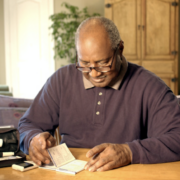Accelerated Frailty and COVID-19: Musings from the COVID Unit at Hopkins Bayview
Over the past two months, I’ve worked on several occasions as the attending physician on a non-ICU COVID unit at Hopkins Bayview where I treated several older adult patients. Although many of them had some level of COVID-related pneumonia, many others presented to the hospital in unexpected ways. One of the more common ‘alternative’ presentations that I observed was one that looks like accelerated frailty with none of the other common signs or symptoms of COVID. The following clinical presentation represents an amalgam of several patients who presented in this way, and a few thoughts on how COVID infections could provide researchers and clinicians alike important insights into frailty, its etiologies and its potential treatments.
The Clinical Case: A new 83 year old patient was admitted to the non ICU COVID unit after several hours in the emergency room. She was in quite good health in the week before she was admitted and was cooking and cleaning and participating in all of the household chores according to her daughter. A couple of days before she was admitted, she started to complain about how tired she was. A day before her hospital admission, she didn’t help get the breakfast dishes cleaned from the table, and went to rest in the bedroom. She slept most of the day and didn’t eat or drink much. The following day, she was still quite fatigued, didn’t help with usual household chores, and didn’t eat or drink at all. That evening, the family found her alert but too weak to get up from a chair in her bedroom and called 911.
During her emergency room evaluation, she was found to have no cough and no fever. However, she did have very low blood pressure with evidence of dehydration on her lab values and profound muscular weakness. A few opacities on a routine chest x-ray triggered a COVID test, which turned out to be positive. On admission, she was profoundly weak and fatigued, with absolutely no interest in drinking or eating. After about three weeks in the hospital and two negative COVID tests, she started sipping water and nutritional supplements, and regained enough strength to go to a rehabilitation facility for further care.
Strikingly, the patient never had any signs or symptoms of COVID pneumonia beyond a few modest changes in her chest x-ray. Instead, she had presented with an accelerated version of the classic signs and symptoms of physical frailty including weakness and fatigue. Given the emerging evidence that marked inflammatory pathway activation drives much of the pathophysiology observed in COVID infections, these frailty-like signs and symptoms may well be driven by inflammatory cytokines. Indeed, the clinical observations that I made in several older patients during my shifts on the COVID unit are quite similar to what we have found in frailty research over many years. Such observations, and many more coming in now, may well provide us with some important insights as we look to better understand frailty and how best to treat it. Stay tuned for more on this topic in the coming weeks and months.
Dr. Jeremy Walston is a Geriatrician and Professor of Geriatric Medicine in the Johns Hopkins University School of Medicine.




